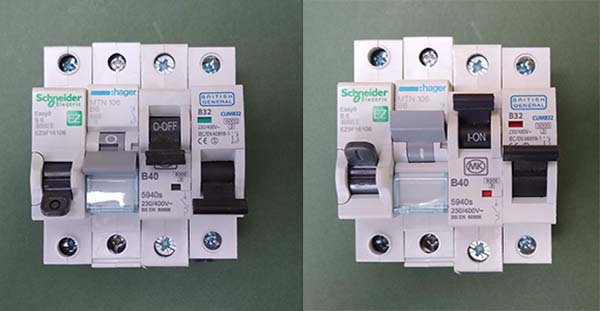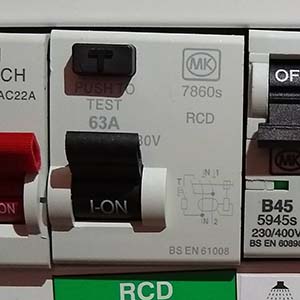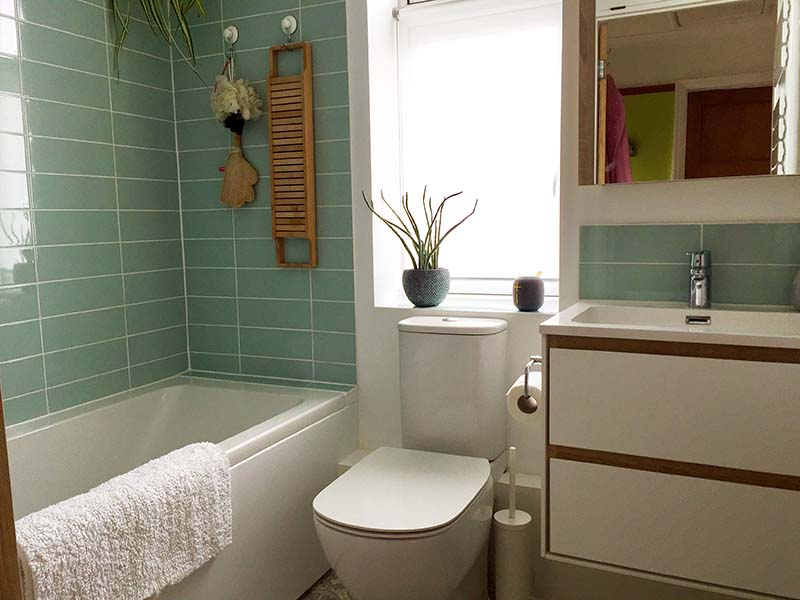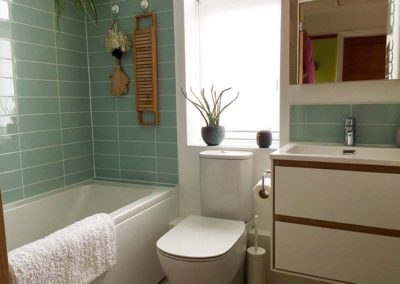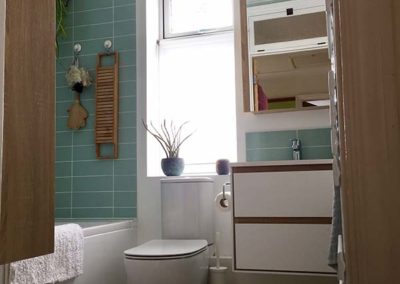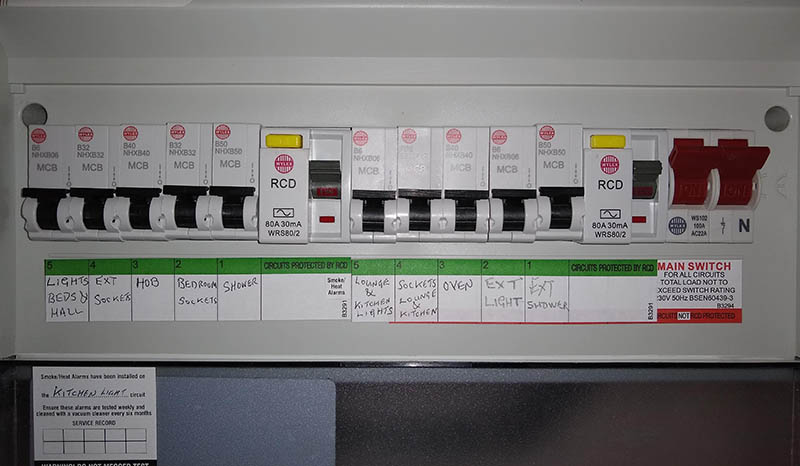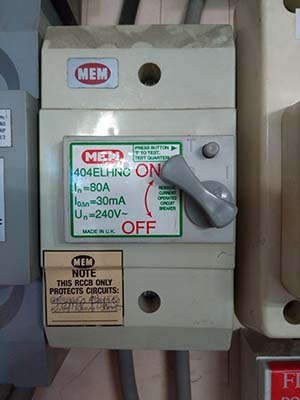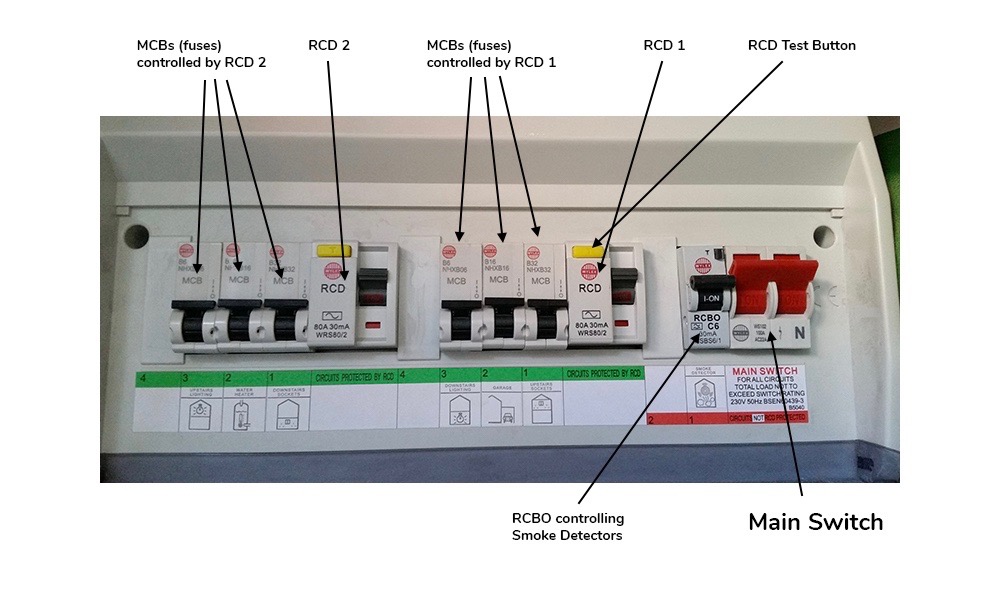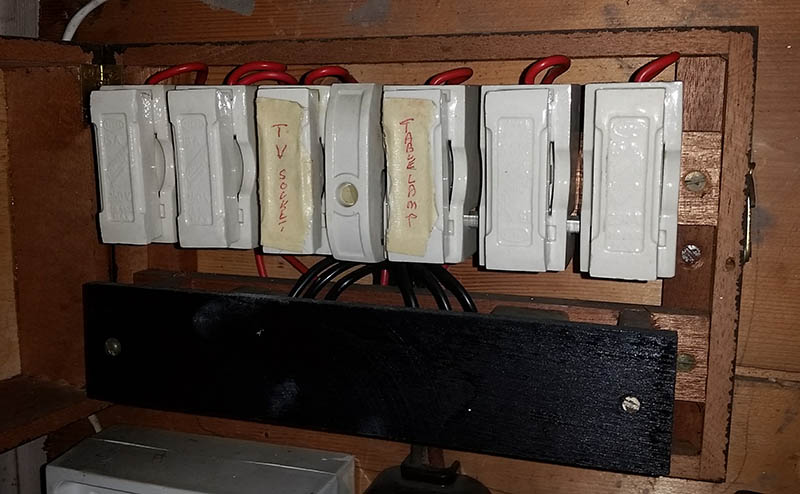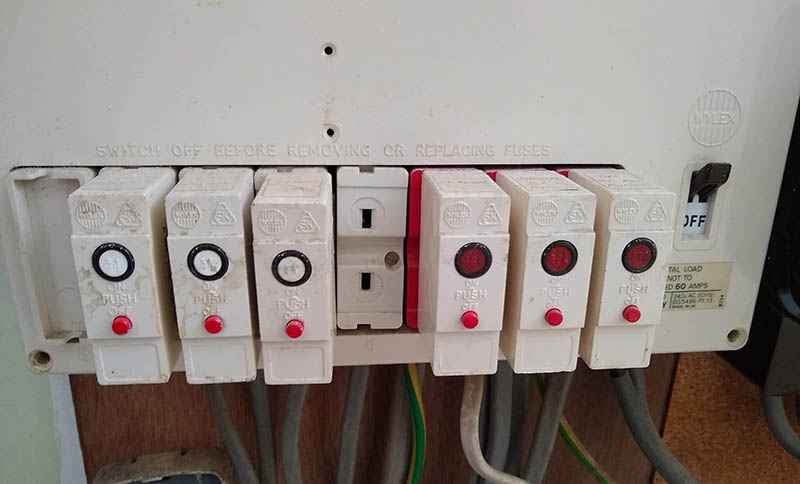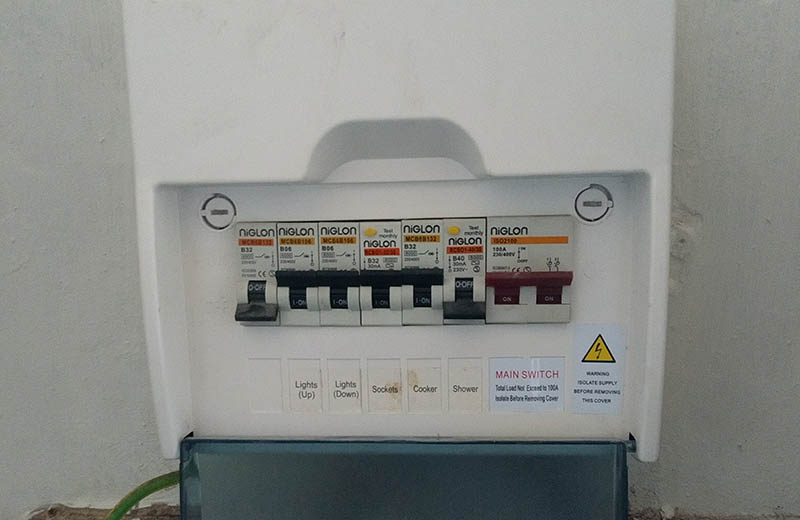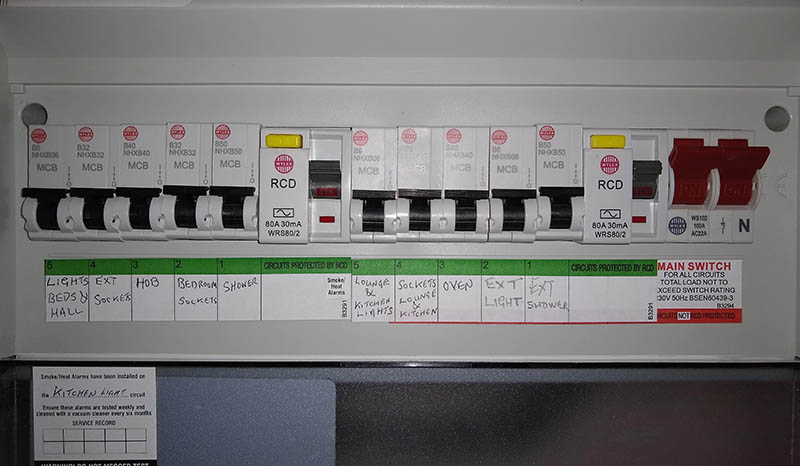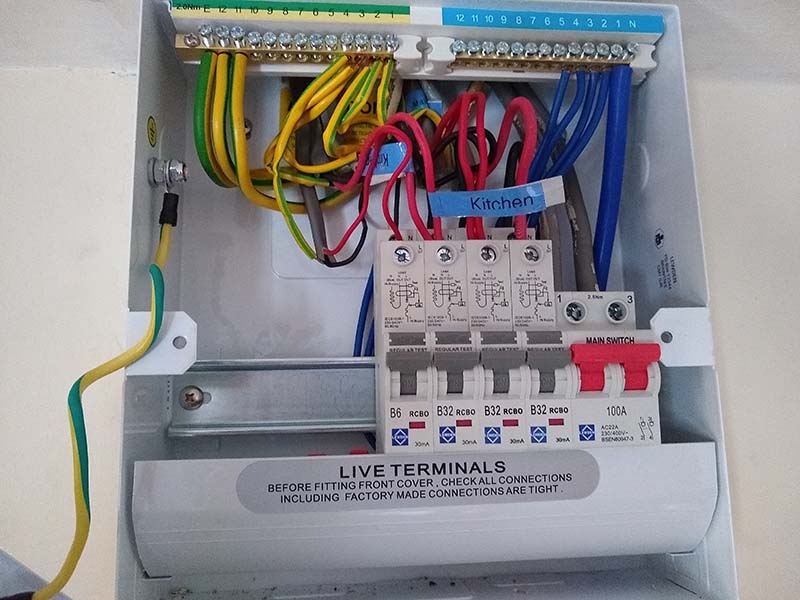
Electrical – Glossary of Terms
We thought it might be helpful to have a list of regularly used electrical terms to help explain some of the sometimes confusing terminology used
This can be switched or unswitched. It is a way of connecting an appliance without using a plug. It is commonly used with Boilers. The fuse holder can take different size fuses – 3, 5, 10 & 13amp
These are commonly known as “Fuses” on Consumer Units. They are used to control individual circuits. In more modern Consumer Units, they are controlled by Levers. if the lever is pointing UP, the MCB is on, if it is pointing DOWN, the MCB is off.
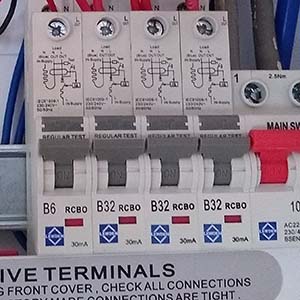
RCBOs are very much more common these days. At its most basic level, an RCBO is an RCD combined with an MCB. Effectively each circuit has its own RCD.
They make a Consumer Unit more expensive, but they are much more convenient for the consumer. If a fault developes on a circuit, only that circuit will be affected, leaving everything else working.
If the lever is pointing UP, the RCBO is on, if it is pointing DOWN, the RCBO is off.
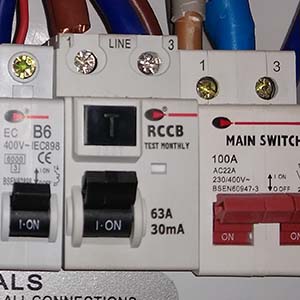
RCCBs are RCDs. Like RCDs, they are used to protect a collection of MCBs. Like RCDs, they can also be used as a Main Switch.
If the lever is pointing UP, the RCCB is on, if it is pointing DOWN, the RCCB is off.
An RCD, or Residual Current Device, is a device to protect against faults. It measures the current in the circuits that it controls. If there is an imbalance, it assumes that some of the current has leaked out and is causing a danger. The current is immediately (or, at least within 300 milliseconds) switched off and there is no longer any power.
If the lever is pointing UP, the RCD is on, if it is pointing DOWN, the RCD is off.
RCDs are sometimes used as the Main Switch on a Consumer Unit
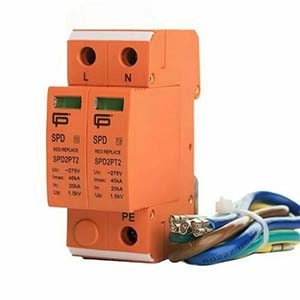
Surge Protection Devices are becoming increasingly common. The latest (18th) Edition of Electrical Regulations required that these devices be installed where an interruption to the power supply could cause a danger.
Manufacturers are now including these as standard in many of their Consumer Units. They are designed to protect sensitive electrical equiment against fluctuations in the supply voltage. We now have many more sensitive electronic devices in our homes which could be damaged by fluctuations in supply.

